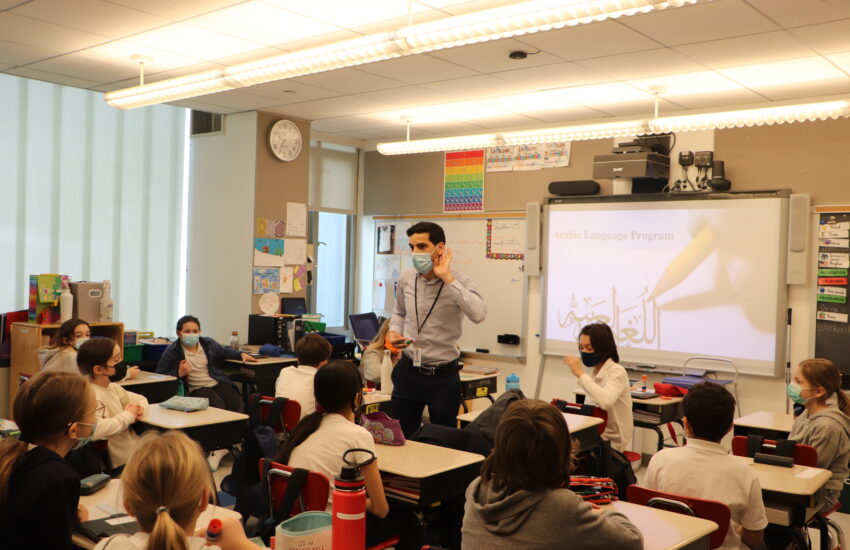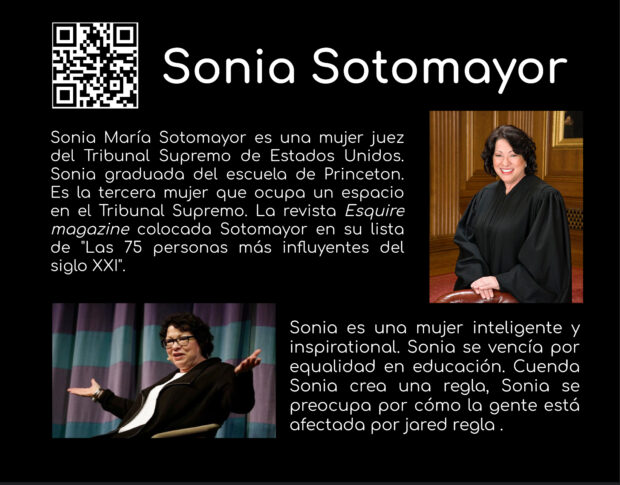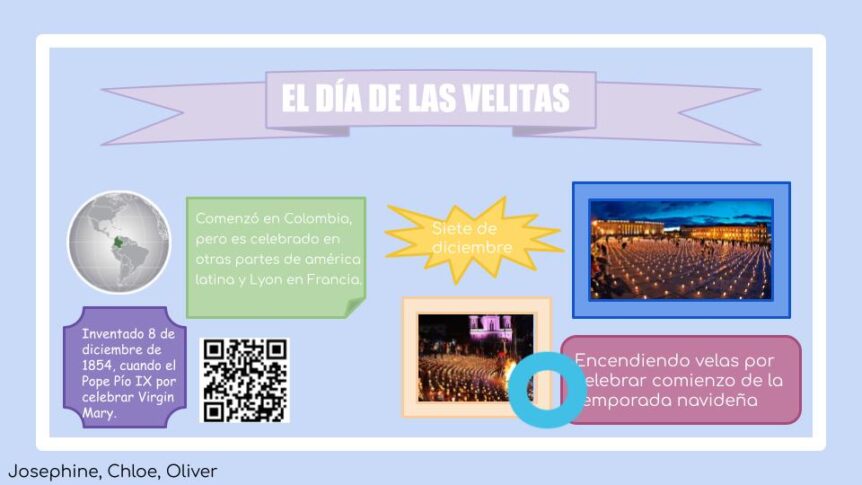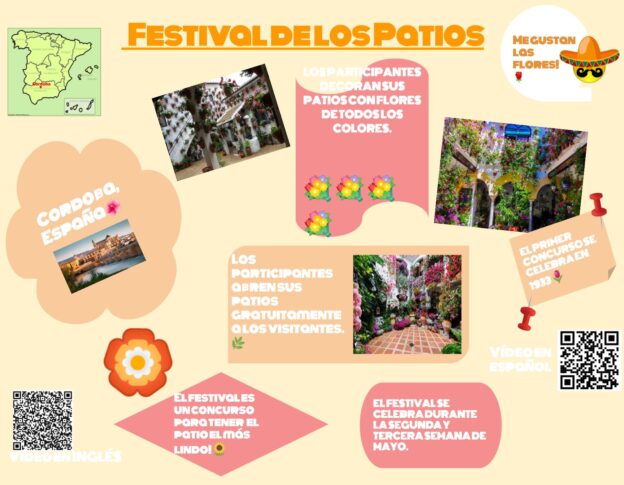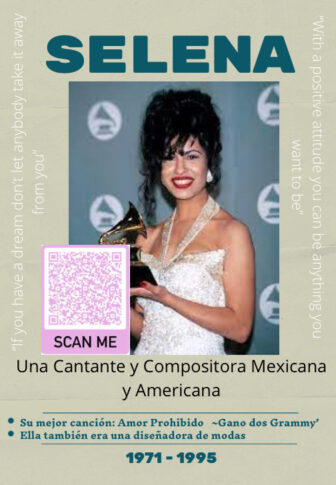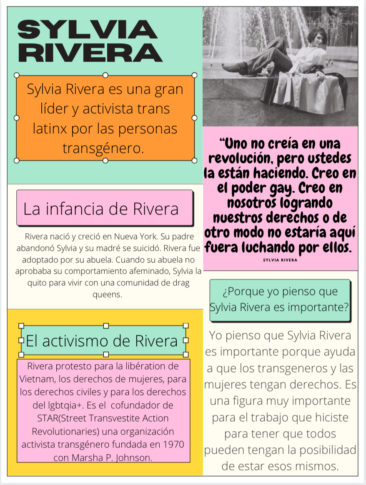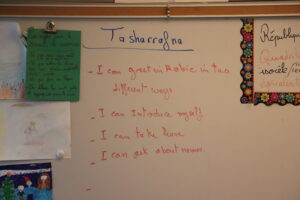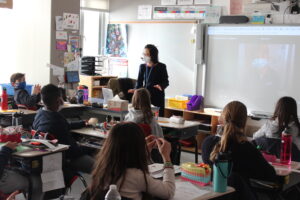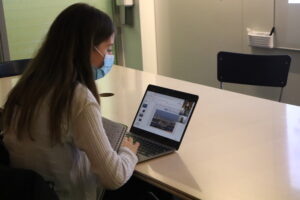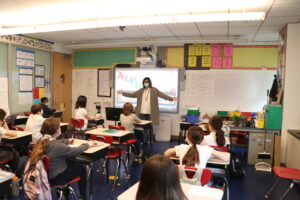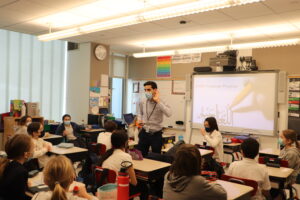In a world that is more connected than ever, learning a language opens many doors. It is a tool for communication, but as linguist Claude Hagège points out, it also accounts for “ways of thinking, perspectives of the world, and culture.” In many ways, as linguist Émile Benveniste noted, “language is the interpreter of society.”
Emphasizing the relationship between language and culture is foundational to how we teach language at the Lycée. When a communication-focused approach to the language is combined with a deep understanding of its culture, students are anchored in the realities of the world around them, and are open to exploring and developing stereotype-free perspectives of different societies.
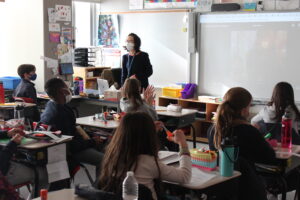 Indeed, the world language department’s teachers see their work as a way to develop open-mindedness and understanding. “There’s no limit, you can do anything,” says Spanish teacher Najma Moratti, “it’s like a magic wand.” “It’s a way to kindle the students’ interest,” adds Mandarin teacher Susan Wei.
Indeed, the world language department’s teachers see their work as a way to develop open-mindedness and understanding. “There’s no limit, you can do anything,” says Spanish teacher Najma Moratti, “it’s like a magic wand.” “It’s a way to kindle the students’ interest,” adds Mandarin teacher Susan Wei.
Take the German language for example, spoken by more than a hundred million native speakers. Doesn’t it open the door to the artistic world of Schubert, the texts of Patrick Süskind or the philosophy of Hannah Arendt? Doesn’t Italian allow you to grasp the extraordinary richness of a country where Petrarch, Michelangelo and Fellini were born, and whose historical and architectural remains are among the largest in the world? Doesn’t Arabic, in its version taught in high school (al-fusha) or in its dialect, invite you to embrace thousand-year-old cultures, to imagine yourself in the alleys of the medina of Marrakech or in the oldest university in the world in Fez and to be fascinated by Nadine Labaki’s cinema? What about the language of Cervantes and Pablo Neruda, reflecting the immense cultural diversity and heritage of the Hispanic world, made popular by its icons of art, music and cinema such as Frida Kahlo, Paco de Lucía and Pedro Almodóvar? Doesn’t the study of Chinese, the most widely spoken language in the world, offer the opportunity to immerse oneself in a ten thousand year old culture, to approach the art of Ai WeiWei and to discover the beauty of the imperial palaces of China?
 The students agree – according to Bakoro, a seventh grader, her favorite things about learning Spanish are speaking and understanding it, as well as taking an interest in other cultures. For Anissa, an eighth grader, learning Arabic gives her the opportunity to observe the similarities and differences between languages. And Tess, a ninth grader, gains a better understanding of her background. Like all Lycée students, they chose the language they would study starting in 6th grade: Arabic, Italian, Mandarin, Spanish or German.
The students agree – according to Bakoro, a seventh grader, her favorite things about learning Spanish are speaking and understanding it, as well as taking an interest in other cultures. For Anissa, an eighth grader, learning Arabic gives her the opportunity to observe the similarities and differences between languages. And Tess, a ninth grader, gains a better understanding of her background. Like all Lycée students, they chose the language they would study starting in 6th grade: Arabic, Italian, Mandarin, Spanish or German.
At the foundation of language exploration are basic linguistic and communicative methods, on top of which we add discovery of literary texts, works of art, traditions, films, music, as well as culture. Teachers use project-based learning to encourage students to develop their linguistic, artistic and technological skills– podcasts, writing workshops, theatrical exercises, video editing, and escape games, among others. Working in all these realms of a foreign language encourages students to question its origins, its influence, its footprint and its heritage; and allows us to travel through space and time, with the poetic touch that etymology provides. Spanish, for example, has more than four thousand words derived from Arabic, known as “arabisms.” During a session with Arabic teacher Younes Samid, groups of tenth graders studying Spanish explored this, and they discovered ways that a word can contain the history of how two cultures met one another.
Creativity plays a distinct role in how students explore the cultural identity and heritage associated with a language. Throughout the fall 2022 semester, several classes worked on projects that have been the theme of our school exhibits and presentations on digital workspaces.
During Hispanic Heritage Month, celebrated from September 15th and October 15th in the United States, Spanish teachers Farida Meddah and Cécile Perruche asked their eighth-grade students to spread awareness about traditions and customs of the Hispanic world by creating posters accompanied by QR codes. The goal was to help students to consider the richness and diversity of Hispanic identities as well as their influence on American society. Echoing this celebration of identity, other eighth graders and my Terminale LV3 students collected testimonies from people of Hispanic origin living in the United States for interviews or podcasts, to learn about their experience and their thoughts about being Hispanic.
As part of the 12th-grade diversity and inclusion program created in collaboration with Spanish teacher Najma Moratti, students engaged with the history and identity of Afro-Colombians. Students were able to discover initiatives made in other Latin American countries that acknowledged Afro-descendants and made them more visible. Najma then created this interactive image to summarize the student’s collective work.
Najma Moratti and Anthony Straub’s 11th grade Spanish students created posters as part of a lesson on indigenous languages in Mexico, to raise awareness about indigenous languages in danger of disappearing. The lesson focused on the necessity of preserving Mexican indigenous languages, the importance of reading and publishing them, and the role of art in helping to keep them alive. Anthony Straub also invited his 5th grade students to discover the Mexican festival of the dead or Día de muertos. A beautiful exhibition illustrates this work, mixing art and traditions.
The concept of our heritage and how we pass it on was also addressed in Susan Wei’s Mandarin classes. The students interviewed Chinese immigrants from mainland China and Taiwan about their experiences, their motivations for coming to the United States, the difficulties they encountered, and their questions about identity and assimilation.
This non-exhaustive list shows how the language department involves students in learning, all while raising awareness about essential issues like the transmission of language and identity. And this approach starts from the very first time students begin thinking about their language choices, with a five-week language exploration program for fifth graders. Since January 10th, each fifth grade class has received an hour of instruction in one of the five languages taught in the secondary school. The fun and interactive approach to the course encourages the students’ enthusiasm and the enjoyment of learning, one that we hope they carry throughout their time learning the language!
About the Author :
Caroline Roquain was born and raised in France. After graduating from Université Le Mans with a Master’s degree in Spanish-Golden Age of Literature in 2008, she worked for two years as a French teaching assistant at the Universidad de Santiago de Compostela. She moved back to France and obtained her agrégation and then taught Spanish for seven years in three different high schools. Caroline likes to engage her students, to nurture their creativity through music, theater and other activities, and to encourage them to enhance their skills.

